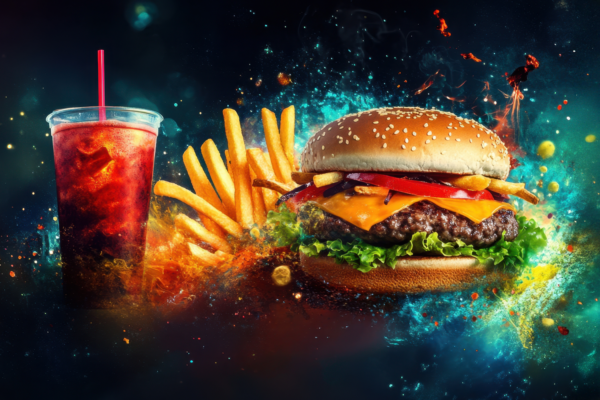Even the most beloved signature dish eventually loses its appeal. That’s menu fatigue — a real phenomenon that impacts restaurants, manufacturers, and retailers alike. When consumers experience repeated exposure to the same flavors or menu items, excitement fades, repeat visits decline, and engagement dips. Understanding flavor fatigue and menu fatigue is critical for any foodservice business looking to maintain customer interest and drive sales.
What Is Menu Fatigue? Why It Matters Now
Menu fatigue occurs when diners feel indifferent or bored with a restaurant or brand’s offerings. Too much repetition, lack of novelty, and stale menus lead to disengagement — even loyal customers start exploring competitors. Datassential research shows that overexposure can wear down even the strongest menu performers, and the impact is measurable across every foodservice segment.
The cost of menu fatigue isn’t just lost repeat business — it’s reduced social buzz, lower online engagement, and fewer word-of-mouth referrals. Restaurants with static menus lose the discovery element that drives diners back.
Which Flavors and Categories Fatigue First?
Cocktails: The Fatigue Frontline
Cocktails top the fatigue list. While mixology thrives on novelty, it’s also the first category to show wear. Classic flavors like guava and blueberry are slowing in new launches, while bolder twists — passion fruit, yuzu, and unexpected spice profiles — are gaining momentum. Operators relying on the same core cocktail lineup season after season miss emerging excitement and social relevance.
Healthy and Wellness Dishes
“Better-for-you” items experience some of the most volatile swings in consumer interest. When healthy feels repetitive or predictable, diners pivot to indulgence. Flavor fatigue hits these items hardest when they lack craveable pairings or fresh formats.
Emerging Fatigue Zones
Breakfast items, salads, and breakfast sandwiches also show early signs of fatigue in menu data. The culprit? Predictable ingredient combinations and lack of seasonal rotation.
How Flavor Fatigue Differs From Menu Fatigue
Flavor fatigue (also called taste fatigue) happens when consumers get tired of specific flavor profiles or ingredient combinations — even if the product is well-liked. Repeated exposure makes the flavor less exciting over time. A strawberry daiquiri might be excellent, but after six months on the menu, consumers crave something different.
Menu fatigue is broader — it’s the overall sense that a restaurant or brand’s menu feels stale or unchanging. Flavor fatigue is a component of menu fatigue, but they’re distinct problems requiring different solutions.
How to Combat Menu Fatigue: Actionable Strategies
Rotate innovation in small doses. Limited-time offerings (LTOs) and seasonal swaps keep menus fresh without overwhelming operations. A three-month rotation gives regulars reason to return while keeping things manageable.
Track performance with data. Monitor declining sales of once-strong items — that’s an early warning of flavor fatigue. Layer in customer feedback to catch fatigue before it impacts revenue.
Remix fatigued flavors instead of retiring them. Datassential research shows flavors rarely disappear; they need reinvention. A tired cocktail can become a dessert. A health bowl ingredient can be paired with a trending sauce. This costs less than full menu redesign.
Balance core hits with unexpected additions. Keep bestsellers, but make room for something surprising. This signals freshness without alienating loyal customers.
These principles apply across operators, manufacturers, retailers, and distributors — each can apply them to their own business model.
How to Revive Fatigued Flavors: Three Strategies
- Pair with trending ingredients. Strawberry finds new life in matcha drinks. Blueberry gets repositioned in a sriracha-forward sauce. Pairing tired flavors with emerging ingredients signals newness while maintaining familiar taste notes.
- Switch item categories. A cocktail flavor can become a dessert. A health bowl ingredient can become a snack topping. Format changes feel like innovation even though the flavor core remains.
- Tap counter-trends. Balance indulgence with simplicity. Move from complex to clean. Layer nostalgia into modern applications. Counter-trends signal evolution and keep flavors relevant.
Frequently Asked Questions About Menu Fatigue and Flavor Fatigue
What exactly is menu fatigue?
Menu fatigue is when diners or consumers feel indifferent or bored with a restaurant or brand’s offerings. Too much repetition, lack of novelty, or stale menus lead to disengagement — even loyal customers start exploring competitors. It directly impacts repeat visit rates, average check size, and customer lifetime value.
What is flavor fatigue, and how does it differ from menu fatigue?
Flavor fatigue (also called taste fatigue) happens when consumers tire of specific flavor profiles or ingredient combinations — even if the product is well-liked. Repeated exposure makes the flavor less exciting. A flavor can fatigue without the entire menu being stale. Flavor fatigue is a component of menu fatigue, but menu fatigue is the broader issue of overall menu staleness.
Which menu categories are most susceptible to fatigue?
Cocktails and mixed beverages top the fatigue list, followed closely by “healthy” and wellness-oriented dishes. Breakfast items, salads, and salad-based bowls also show early signs of fatigue due to predictable ingredient combinations. Categories that rely on novelty (like cocktails) fatigue fastest because consumers expect constant innovation.
What are the key signs my menu is suffering from fatigue?
Look for these warning signs:
- Declines in repeat orders or lower visit frequency among regulars
- Core menu items selling at lower rates than historical performance
- Customer feedback asking “What’s new?” or commenting the menu feels stale
- Diminished excitement around new launches or limited-time offerings
- Reduced social media engagement around signature items
- Longer gaps between visits for historically loyal customers
How often should menus and flavors be refreshed?
There’s no one-size-fits-all answer, but rotating limited-time offerings, seasonal swaps, or testing new flavors every 3-6 months is a proven strategy. Fast-casual and QSR concepts often rotate monthly. Fine dining may do seasonal overhauls. The key is consistency — regular, predictable refreshes signal that your menu evolves with guest preferences.
Can small tweaks prevent menu fatigue, or do I need a full overhaul?
Small tweaks often work best. Changing sauces, herbs, spices, textures, or repositioning flavors in new formats can breathe new life into a menu without wholesale operational change. A signature salad with a new vinaigrette feels fresh. A tired cocktail paired with a trending spirit feels innovative. Chefs successfully re-energize dishes through sauce and seasoning adjustments alone.
How can I use data or technology to spot flavor fatigue early?
Track item performance in your POS system over time. Watch for declining sales of once-strong items. Integrate customer feedback (ratings, comments, reviews) into your menu management system. Monitor social media sentiment around signature dishes. Set up performance benchmarks — if a signature item’s sell-through drops 15-20% month-over-month, investigate whether fatigue is setting in.
Do psychological or cognitive factors influence flavor fatigue?
Yes. Research shows that when people are mentally depleted or experience decision fatigue, they enjoy complex flavors less, favoring simpler tastes. This means dining context, visit frequency, and overall customer stress levels can accelerate flavor fatigue. During high-stress periods, customers may gravitate toward familiar, simple flavors rather than adventurous new ones — then tire of them faster once stress passes.
In subscription services or packaged goods, how do you prevent flavor fatigue?
Let consumers swap flavors, skip periods, or rotate in new variants regularly. Variety is the core value proposition — don’t lock customers into repetition. Quarterly flavor rotations in snack boxes, quarterly brew swaps in coffee subscriptions, or flexible flavor choices in meal kits keep engagement high and churn low.
What’s the difference between flavor fatigue and a menu flop?
A menu flop is usually about execution, misalignment with brand expectations, or poor market fit. Flavor fatigue is about timing, overexposure, or stale repetition — even a great flavor can fatigue if overused. A flop fails from day one; fatigue creeps in after weeks or months of strong performance. Understanding the difference helps you diagnose the real problem before making changes.
Can a fatigued flavor make a comeback?
Absolutely. Flavors don’t disappear — they cycle. A flavor that fatigues today can be repositioned, remixed, or reintroduced in a new format and find success again. Strawberry has cycled in and out of trend multiple times. The key is understanding why it fatigued (overexposure, lost trend relevance, poor pairing) and addressing that root cause in the comeback strategy.
How often should I test new flavors to avoid fatigue?
Run ongoing testing, but be strategic. Introduce new flavors every 2-3 months while retiring or rotating tired ones. This keeps your menu evolving without creating operational chaos. Test through limited-time offers first — this lets you validate consumer interest before full-menu integration.
The Bottom Line: Menu Fatigue Is Feedback, Not Failure
Menu fatigue and flavor fatigue aren’t signs of bad products or poor execution — they’re signals that it’s time to evolve. Every sector of foodservice faces this cycle: operators managing restaurant menus, manufacturers launching new products, retailers optimizing shelf placement, and distributors guiding clients toward emerging opportunities.
The solution isn’t complexity — it’s balance. Keep the core hits that built your brand loyalty, but create room for something unexpected. Monitor performance data to catch fatigue early. Remix tired flavors instead of retiring them. Rotate innovation in manageable doses.
Because even the best menus, the best-loved flavors, and the strongest brands need a little refresh to stay exciting.
Ready to fight against menu fatigue? With Datassential, you’ll always know how to stay one step ahead. Find out more information or book a demo here.
 EN | English UK
EN | English UK DE | Deutsch
DE | Deutsch FR | Français
FR | Français IT | Italiano
IT | Italiano SP | Español
SP | Español





